Echoes of Ancient Athens Adventure
Join us for a free walking tour that unveils the rich tapestry of Athens' history, culture, and architecture, revealing treasures at every turn.
Time
3 Hours
Stops
9 Places
Distance
2.5 km
Acropolis of Athens
Begin your journey at the iconic Acropolis, a symbol of ancient Greek civilization and home to the Parthenon, offering a glimpse into the rich history of Athens.
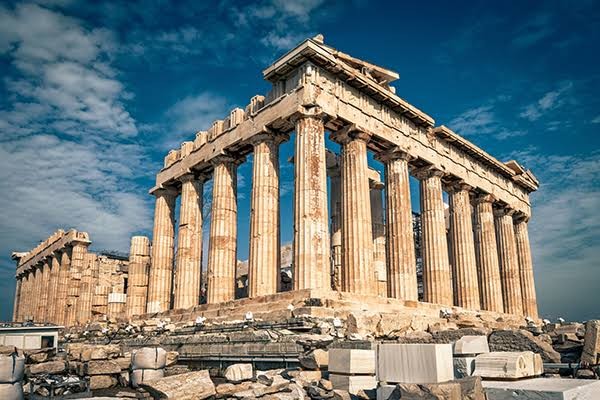
Acropolis of Athens (Source: Google Maps)
The Acropolis of Athens, a UNESCO World Heritage Site, is a monumental complex that stands as a testament to ancient Greek civilization. Dominated by the Parthenon, a former temple dedicated to the goddess Athena, the Acropolis reflects the grandeur and architectural innovation of the 5th century BC. The site has been a pivotal symbol of democracy and philosophy, influencing countless generations. Its Doric columns and intricate sculptures exemplify classical architecture's beauty and precision. Beyond its architectural significance, the Acropolis serves as a cultural icon, representing the birthplace of Western civilization and the enduring legacy of ancient Greece.
Theater of Dionysus
Just a short walk from the Acropolis, visit the Theater of Dionysus, the birthplace of Greek drama and an essential cultural site of ancient Athens.
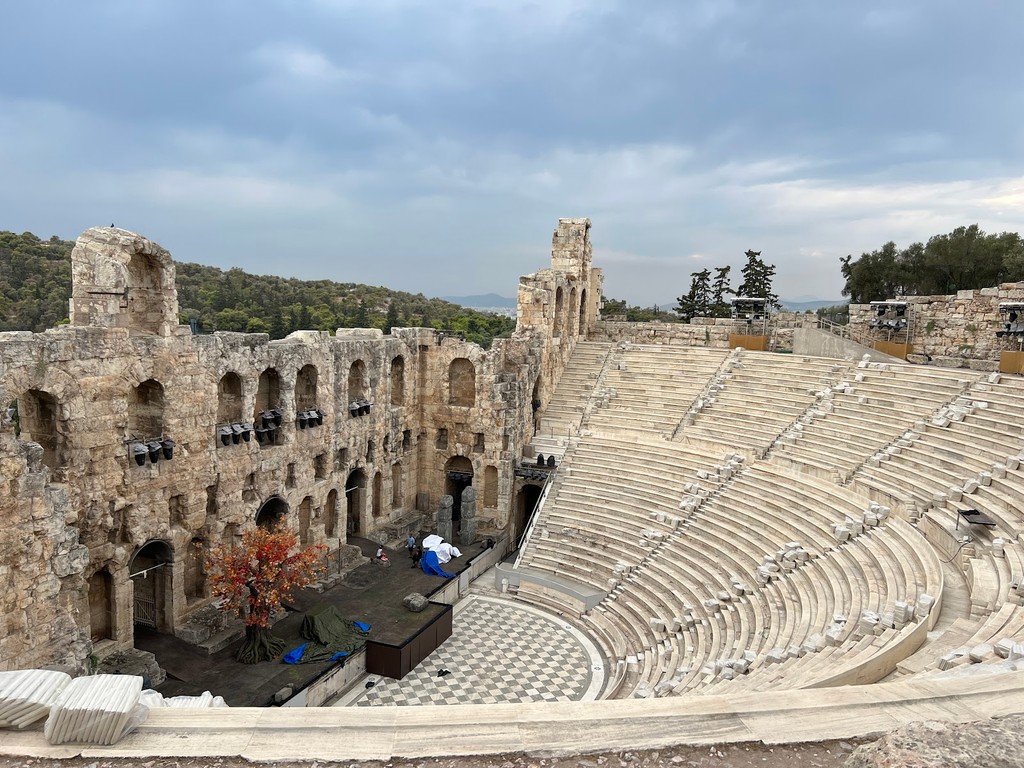
Theater of Dionysus (Source: Google Maps)
The Theater of Dionysus, located on the southern slope of the Acropolis, is considered the birthplace of Greek drama. Dating back to the 6th century BC, it was dedicated to Dionysus, the god of wine and festivity. This open-air theater could accommodate thousands of spectators and hosted the first performances of tragedies and comedies by renowned playwrights like Aeschylus, Sophocles, and Euripides. The theater's design reflects the importance of drama in ancient Greek culture, serving as a site for religious festivals and civic celebrations. Its ruins, including the stone seats and remnants of stage structures, provide insight into the artistic and cultural life of Athens during its golden age.
Acropolis Museum
Conclude the first hour at the Acropolis Museum, where you can delve deeper into the artifacts and sculptures from the Acropolis, enhancing your understanding of the history you've just walked through.
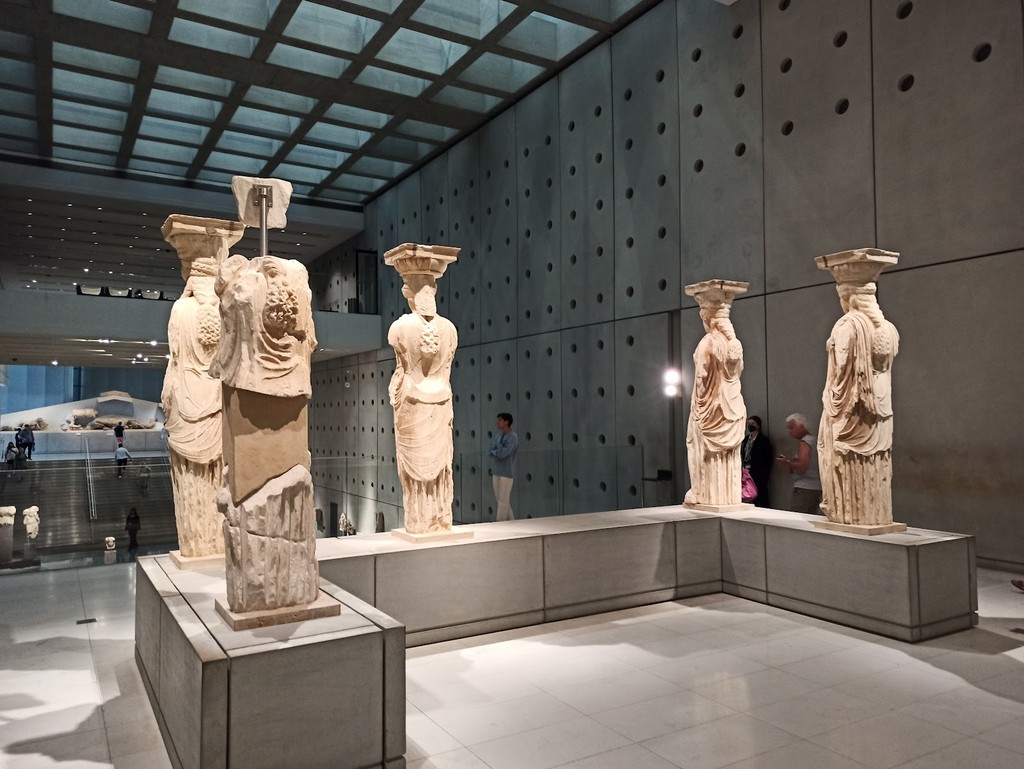
Acropolis Museum (Source: Google Maps)
The Acropolis Museum, opened in 2009, is a modern architectural marvel that houses an extensive collection of artifacts from the Acropolis. Designed by architect Bernard Tschumi, the museum's transparent structure offers stunning views of the Acropolis itself. It showcases over 4,000 objects, including sculptures, pottery, and everyday items from ancient Athens. The museum’s highlight is the Parthenon Gallery, which displays the Parthenon friezes in a space that replicates their original location. This museum not only enhances our understanding of the Acropolis' historical significance but also serves as a cultural bridge, connecting visitors with the ancient world through its innovative exhibitions and educational programs.
Anafiotika
Stroll to the charming neighborhood of Anafiotika, nestled on the slopes of the Acropolis, known for its Cycladic architecture and picturesque streets.

Anafiotika (Source: Google Maps)
Anafiotika is a charming neighborhood located at the foot of the Acropolis, characterized by its Cycladic architecture and narrow, winding streets. Built by immigrants from the island of Anafi in the 19th century, this picturesque area resembles a Greek island village, complete with whitewashed houses and blooming bougainvillea. Anafiotika offers a serene escape from the bustling city, allowing visitors to explore its quaint alleys and enjoy stunning views of the Acropolis. The neighborhood's unique charm and historical significance make it a beloved spot for both locals and tourists, reflecting the blend of urban life with traditional Greek island culture.
Tower of the Winds
Nearby, visit the Tower of the Winds, an ancient timekeeping marvel that served as both a clock and a weather vane in Roman Athens.
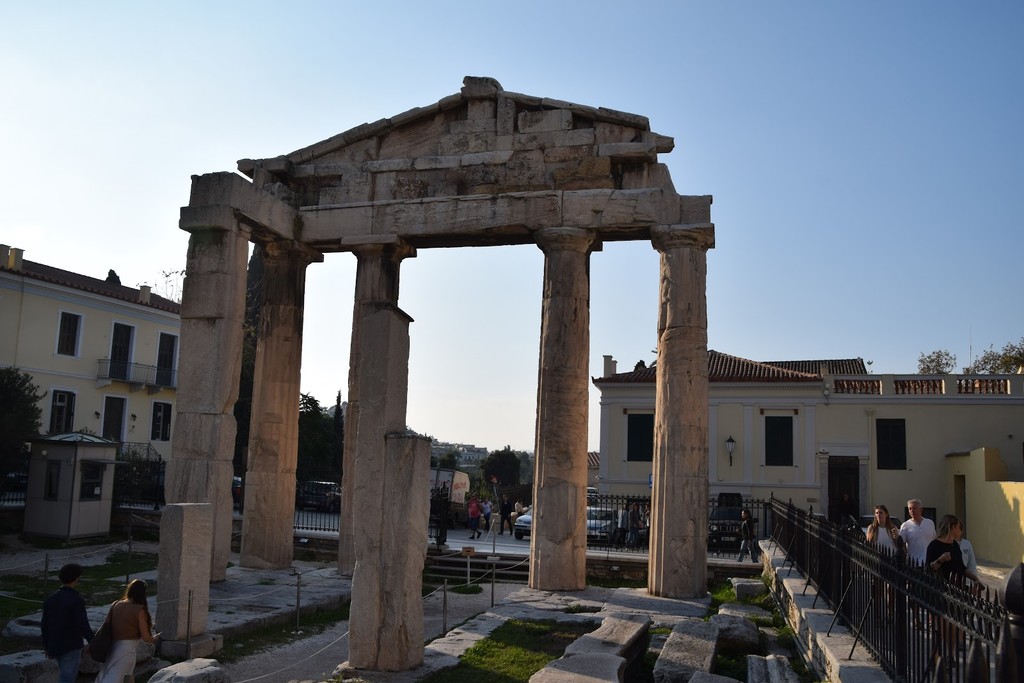
Tower of the Winds (Source: Google Maps)
The Tower of the Winds, also known as the Horologion of Andronikos of Cyrrhus, is an ancient octagonal structure that served as a clock and weather vane in Roman Athens. Built in the 1st century BC, it features a frieze depicting the eight wind deities, each representing a cardinal direction. The Tower was not only an architectural marvel but also an important technological advancement for its time, showcasing the sophistication of ancient Greek engineering. Its interior housed a water clock and mechanisms to indicate the time and weather, making it a vital public resource. Today, the Tower stands as a testament to the ingenuity of ancient civilizations and their understanding of time and nature.
Roman Agora
Continue to the Roman Agora, an ancient marketplace that illustrates the blend of Roman and Greek influences in the city's history.
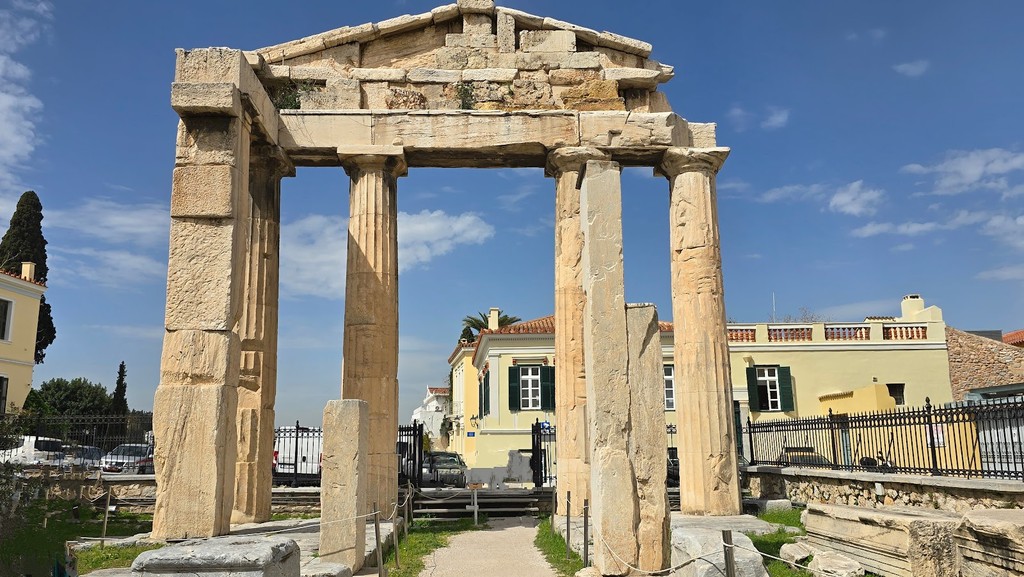
Roman Agora (Source: Google Maps)
The Roman Agora, constructed in the 1st century BC, served as the commercial center of ancient Athens during Roman rule. This expansive marketplace was a hub of social and economic activity, featuring shops, public buildings, and temples. The Agora reflects the architectural style of the Roman period, with its colonnades and public spaces designed for gatherings and commerce. Key features include the Gate of Athena Archegetis and the Temple of the Winds. The Roman Agora played a crucial role in facilitating trade and cultural exchanges, showcasing the blend of Greek and Roman influences in Athenian life. Its ruins offer valuable insights into the daily lives of Athenians during a pivotal era in history.
Hadrian's Library
Explore Hadrian's Library, built by the Roman Emperor Hadrian, which once housed a vast collection of books and served as a cultural center.

Hadrian's Library (Source: Google Maps)
Hadrian's Library, established by Roman Emperor Hadrian in 132 AD, was a significant cultural center in ancient Athens. This grand complex housed a vast collection of scrolls and books, making it a vital resource for scholars and philosophers. The library featured a large courtyard surrounded by colonnades, study rooms, and lecture halls, promoting intellectual discourse and learning. Hadrian's vision for the library was to enhance Athens' reputation as a center of knowledge and culture. Although much of the structure is in ruins today, the remnants reflect its former grandeur and the importance of written knowledge in the ancient world. It remains a symbol of the enduring legacy of education and scholarship in Athens.
Monastiraki Square
Head to Monastiraki Square, a vibrant hub of activity known for its lively atmosphere, street performers, and proximity to historical sites.
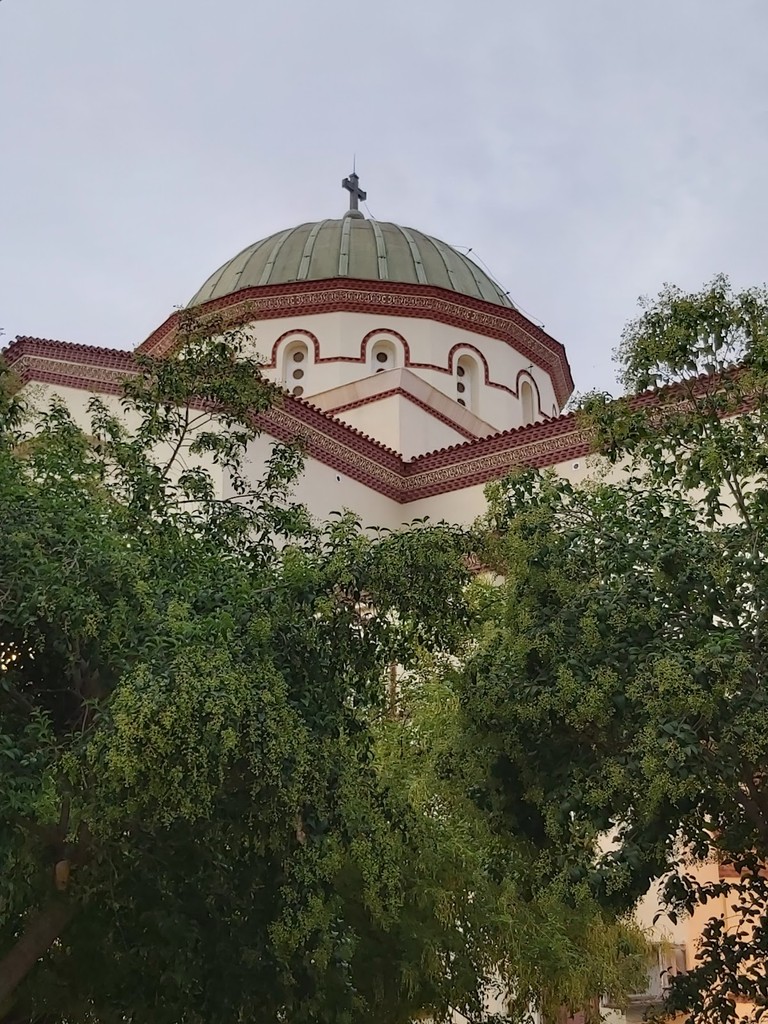
Monastiraki Square (Source: Google Maps)
Monastiraki Square is a vibrant public space that serves as a focal point of activity in Athens. Known for its lively atmosphere, the square is surrounded by shops, restaurants, and historical landmarks, making it a popular destination for both locals and tourists. The square is particularly famous for its bustling flea market, where visitors can find a variety of goods, from antiques to handmade crafts. Monastiraki is also home to the iconic Tzistarakis Mosque and the ruins of the Roman Agora, showcasing the historical layers of the city. The square's energetic ambiance, combined with its rich history, makes it a perfect place to experience the essence of Athenian life.
Ancient Agora of Athens
Finish your tour at the Ancient Agora, the heart of public life in ancient Athens, where democracy was born and philosophers like Socrates once walked.
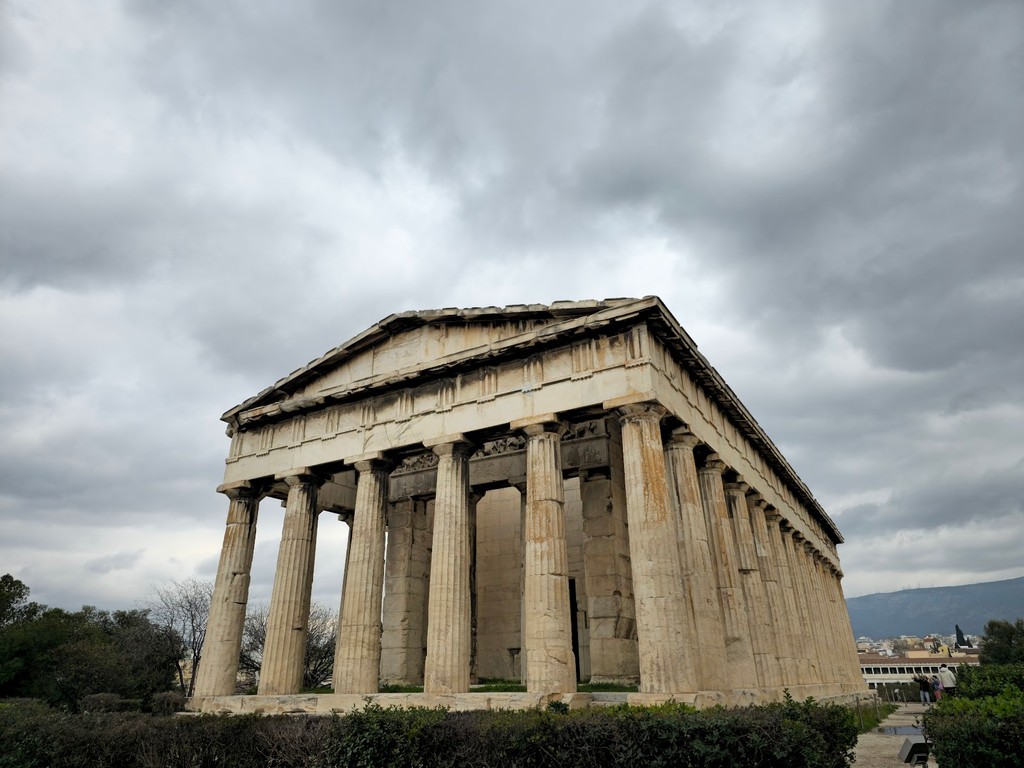
Ancient Agora of Athens (Source: Google Maps)
The Ancient Agora of Athens was the heart of public life in ancient Athens, serving as a marketplace, gathering place, and center of political activity. This expansive site was home to important structures, including the Stoa of Attalos and the Temple of Hephaestus. The Agora was where citizens gathered to discuss politics, philosophy, and daily affairs, making it a cradle of democracy and intellectual thought. Its archaeological remains reflect the architectural styles and cultural practices of ancient Greece. The site also hosted various festivals and events, further underscoring its significance in Athenian society. Today, the Ancient Agora stands as a powerful symbol of Athens' historical legacy and its contributions to democracy and philosophy.

Your travels, your rules.
Create your own Free Walking Tours.
Set your preferences, distances and anything you want to do or see.
Completely free, no payment required.